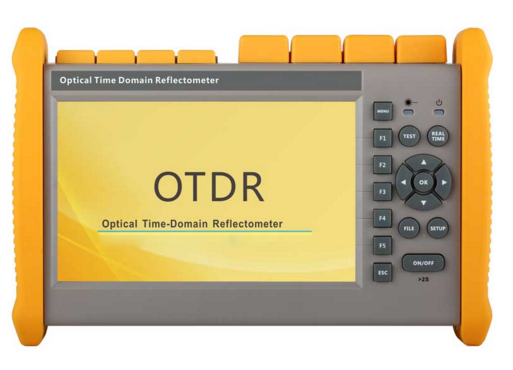Why Optical Fibre Testing Devices Is Critical for Network Maintenance
In the world of network upkeep, the relevance of optical fiber testing devices can not be overstated. By using devices such as Optical Time Domain Name Reflectometers and Optical Power Meters, network specialists can make certain conformity with market requirements while proactively dealing with potential disruptions.
Importance of Normal Examining
In the realm of telecoms, the significance of regular testing of optical fiber can not be overemphasized. Optical fibre networks act as the foundation of contemporary communication systems, helping with high-speed data transmission over substantial ranges. Regular screening makes certain the stability and reliability of these networks, spotting possible problems before they rise right into significant troubles.
Examining assists identify mistakes, such as breaks or bends in the fibre, which can bring about boosted signal loss and compromised efficiency. Anomalies in transmission can degrade customer experience, resulting in reduce data prices and solution interruptions. With systematic screening, network operators can keep optimal efficiency, guaranteeing marginal downtime and making best use of service schedule.
It supplies recorded evidence of network health and wellness, which is critical for audits and assessments. In conclusion, routine optical fiber screening is essential for keeping the functional efficiency, safety, and longevity of telecommunications facilities, eventually making sure a smooth interaction experience for individuals.
Secret Kinds Of Screening Devices

Another important device is the Optical Power Meter, made use of to determine the power degrees of optical signals in the fibre. When coupled with a light, it makes it possible for the evaluation of web link loss, making sure that the network runs within specified criteria.
Furthermore, a Fiber Identifier is indispensable for recognizing particular fibers in a multi-fibre cable without interfering with service. This tool aids in maintenance jobs by determining the appropriate fiber for screening or repair work.
Last But Not Least, Visual Fault Locators (VFL) are used to detect breaks and faults in fiber cables by discharging a visible light. Together, these testing devices create a vital toolkit for keeping and repairing optical fibre networks, guaranteeing trusted performance and reducing downtime.
Troubleshooting Common Issues
When repairing usual concerns in optical fiber networks, service technicians commonly come across a variety of issues that can impact performance and connection. One widespread problem is signal loss, which may stem from factors such as improper splicing, flexes in the fiber, or dirty connectors. Making Use Of an Optical Time Domain Name Reflectometer (OTDR) enables service technicians to identify the exact area of mistakes and evaluate the integrity of the fiber optic cable television.
Another usual issue is attenuation, which describes the reduction of signal strength over range. This can result from excessive bends or incorrect installation strategies. Routine testing with power meters and light resources can assist identify extreme attenuation and establish if the setup abides by market standards.

Enhancing Network Efficiency
Resolving usual issues such as signal loss and attenuation sets the foundation for improving network performance in optical fiber systems. By utilizing innovative optical fiber screening tools, network managers can identify and rectify faults that compromise signal integrity. This positive technique not just stops deterioration of service but also optimizes the overall effectiveness of the network.
Routine testing permits the detection of potential issues before they escalate, ensuring minimal disruption to customers (optical fibre diameter analyser). By gauging criteria such as insertion loss, return loss, and optical power degrees, service technicians can get useful insights into the health of the fiber network. This data-driven strategy makes it possible for targeted maintenance techniques, helping with quicker repair work and reducing downtime
Furthermore, keeping ideal performance levels is critical for sustaining the boosting demands of modern-day applications, such as high-def video streaming and cloud computer. Improved network performance converts to enhanced user experience, faster information transmission, and higher reliability.
Cost-Effectiveness of Upkeep
Purchasing optical fibre screening equipment repays substantially in terms of upkeep costs. By making use of sophisticated click for more screening tools, network drivers can proactively find faults and problems within the fibre optic framework. This early recognition minimizes the threat of devastating failings that could lead to extensive downtime and expensive repairs.
Additionally, the ability to swiftly assess the problem of fibre cords permits much more reliable allotment of upkeep sources. Specialists can concentrate their initiatives on areas that need prompt attention, instead than performing broad, lengthy examinations that may not yield important insights. This targeted method not just minimizes work costs but likewise boosts the overall effectiveness of upkeep approaches.
Furthermore, normal screening with optical fiber devices enhances the lifespan of the network infrastructure. In recap, the cost-effectiveness of upkeep is substantially enhanced through the strategic usage of optical fiber testing equipment, inevitably leading to a durable and reputable network.
Conclusion
In conclusion, optical fiber testing devices plays an essential role in keeping network integrity and efficiency. Regular screening is essential for early fault detection and reliable troubleshooting, ultimately enhancing network reliability.
Comments on “Advanced Robotic Vision Solutions for Optimized Automation Systems”